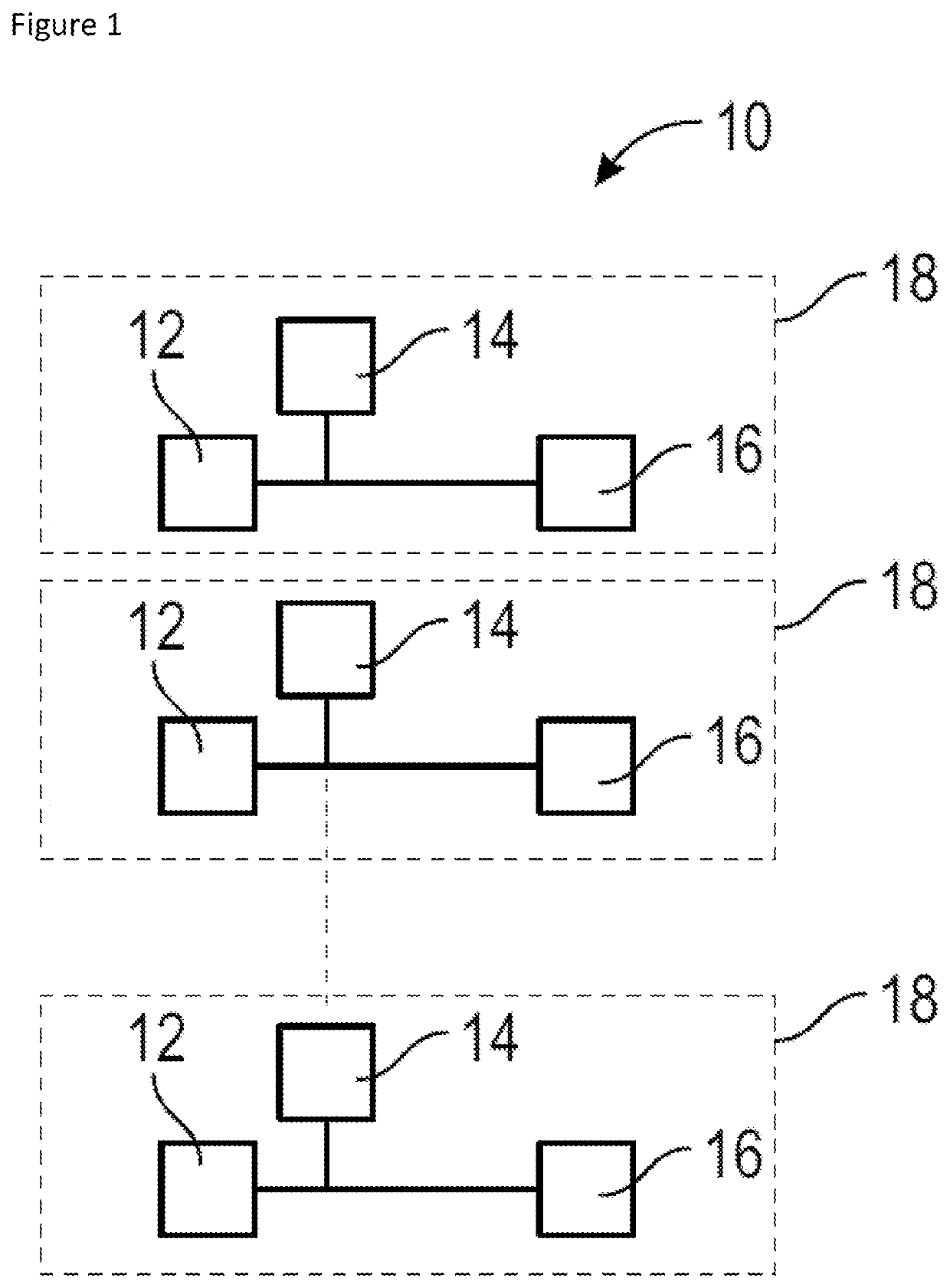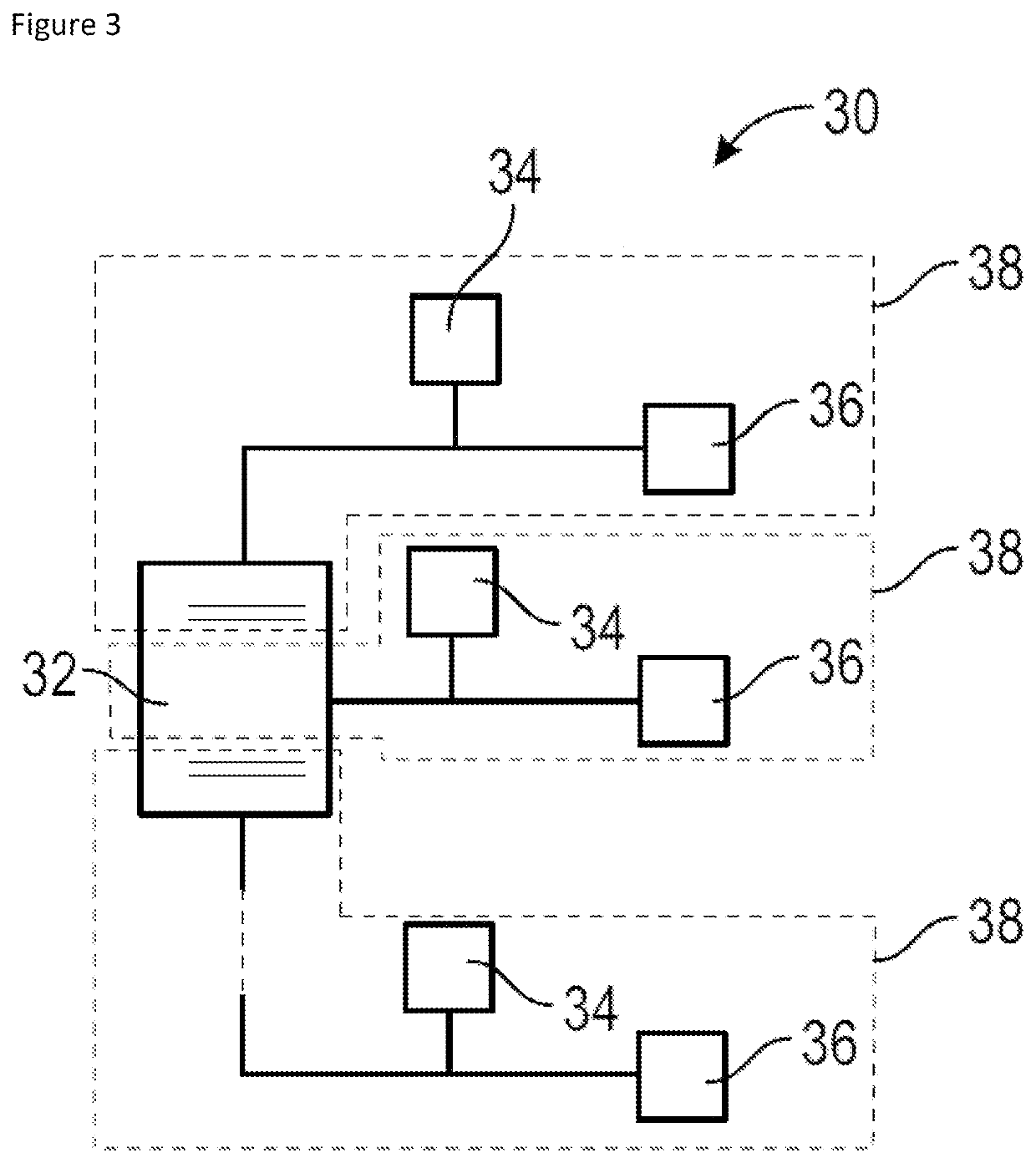Hybrid propulsion architecture and aircraft containing such an architecture
- Summary
- Abstract
- Description
- Claims
- Application Information
AI Technical Summary
Benefits of technology
Problems solved by technology
Method used
Image
Examples
Embodiment Construction
[0058]FIGS. 4 to 8 show a hybrid propulsion architecture 100 according to the invention, for a VTOL aircraft, such as a dual-rotor counter-rotating quadricopter.
[0059]The architecture 100 comprises a single first source 102 of a first type of energy. For example, as shown in FIGS. 5 to 8, the first source 102 comprises a gas turbine 110 and a variable frequency generator 112, followed by a passive rectifier 114. The rectifier 114 is an AC-DC converter.
[0060]The first source 102 may also be a battery, for example a lithium-ion battery. Thus, the first source 102 may be an electrical-thermal generation source, or an electrochemical storage source.
[0061]The architecture 100 comprises second sources 104 of a second type of energy, which is different from the first type of energy of the first source 102. In FIG. 4, three second sources 104 are shown, and in FIGS. 5 to 8, four second sources 104 are shown.
[0062]For example, the second sources 104 may comprise permanent magnet generators. ...
PUM
 Login to View More
Login to View More Abstract
Description
Claims
Application Information
 Login to View More
Login to View More - R&D
- Intellectual Property
- Life Sciences
- Materials
- Tech Scout
- Unparalleled Data Quality
- Higher Quality Content
- 60% Fewer Hallucinations
Browse by: Latest US Patents, China's latest patents, Technical Efficacy Thesaurus, Application Domain, Technology Topic, Popular Technical Reports.
© 2025 PatSnap. All rights reserved.Legal|Privacy policy|Modern Slavery Act Transparency Statement|Sitemap|About US| Contact US: help@patsnap.com



